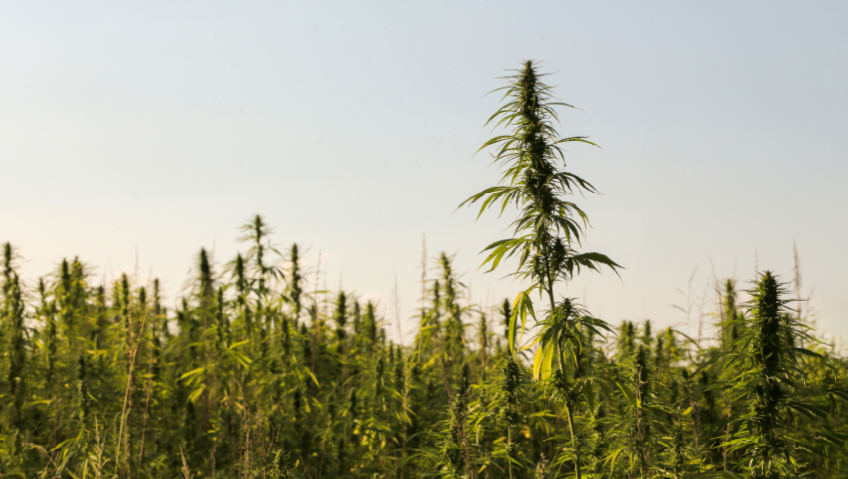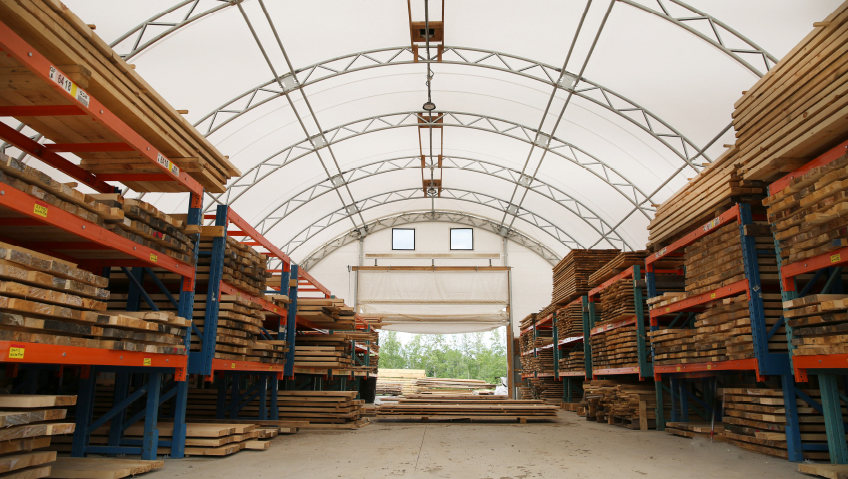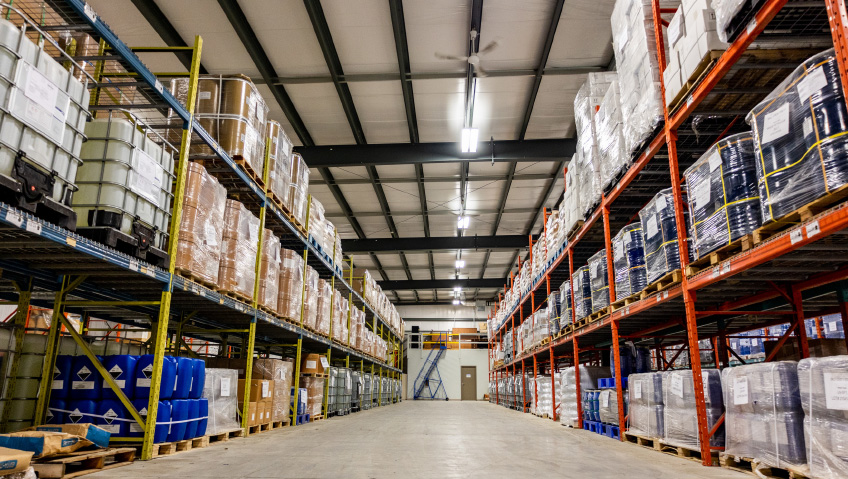The National Hemp Association (NHA) is a small but mighty organization that works in collaboration with government and industry partners to revive the hemp industry in the United States, an industry hindered by prohibition for seven decades.
Through its efforts, NHA serves as a nexus between its members, who include hemp farmers, processors, manufacturers, entrepreneurs, and retailers; the scientific community; and government, to ensure evidence-based policies are drafted and implemented and sound regulations adopted to advance the hemp industry’s growth and the many benefits therein.
What is hemp and why does it matter?
Farmers have grown hemp for industrial use and consumption for thousands of years. A relatively easy crop to grow, hemp has the strongest natural fiber of any resource, making it extremely versatile.
From hemp paper, rope, and textiles to plastics, biofuel, human and animal feed, and stronger, more sustainable building materials, hemp shows great promise for applications across industries and sectors.
Hemp not only promises to transform products that we use in our everyday lives to be more sustainable; it also provides a livelihood to farmers and serves to strengthen rural communities through the promotion of more equitable economies of scale linked to a strong global market.
Impressively, hemp has a total addressable (global) market (TAM) of $15 trillion, but uncertainty about its legality has posed a major barrier to growth. The United States alone represents 90 percent of the global market for hemp products, a retail impact valued at around $620 million, with the capacity to grow 10 percent annually. Currently, it imports much of its hemp fiber, hurd and seeds.
Without clear guidance and a consistent framework for legality, the market will never reach its full potential, which is why NHA has focused on instituting better legislative language that will serve as a foundation for a clear, all-encompassing regulatory framework within which the industry can operate.
Geoff Whaling, Chair of NHA, notes, “If we’re really going to grasp the opportunity that’s before us on this sustainable commodity, we need a whole-of-government approach to industrial hemp because I spend most of my day working with people who say, ‘This is fantastic!’, ‘This fits part of our mandate!’, ‘We’d love to work with you on this!’ and then they follow up with, ‘But, is hemp legal?’”
A question of legality
The United States government legalized hemp with the passage of the 2018 Farm Bill, but the language used in this legislation has created uncertainty, and questions of hemp’s legality continue to persist as a result.
To circumvent assumptions of legality, NHA is working with government to update the definition of hemp to include the word ‘industrial,’ which legislators intentionally left out of the 2018 Farm Bill to ensure that the USDA would permit CBD extraction. This omission had serious implications for NHA members who were interested in growing and harvesting industrial hemp for fiber and grain, which represents 98 percent of the economic potential of the crop.
Currently, farmers who grow industrial hemp under both USDA and state permits are held to the same standards as cannabinoid growers. They are required to give their fingerprints and a background check to plant a crop that, to them, is no different from other rotations they grow.
To change this, the Industrial Hemp Act of 2023, which includes a sub-definition of hemp that reflects the industrial distinction, has been introduced to the United States House of Representatives and Senate. The hope is that the 2023 Farm Bill will enact these changes and two very different market segments will have regulatory frameworks that reflect these differences.
While farmers will still need to apply for permits, there will be two categories under which they can apply: one for cannabinoid production or floral hemp and a second for industrial hemp. Those who choose to grow industrial hemp will be subject to USDA regulations, and states and regulators can still test crops using visual and secondary methods if warranted.
The legislation has garnered the support of members in both the House and the Senate, which has given NHA confidence that the legislation will move forward early this year. As Whaling states, “we’ve got leadership on our side.”
A framework for regulation
The change in language in the 2023 Farm Bill will have no implications on the cannabinoid sector, but it does open the door for improvement. The 2018 Farm Bill mandated FDA oversight on anything produced from hemp—cannabinoids, seeds, grain, and fiber—but while fiber and grain are straightforward, the conditions around cannabinoids, their use, and their dosage are slightly more complicated.
NHA has worked closely with the FDA on this matter to develop a framework that will “meet the industry where it’s at today,” acknowledging that while the CBD market has come a long way in a short time, there are 150 to 175 minor cannabinoids that have yet to be commercialized.
“They want a framework that will allow them to not have to come back to congress every single time that there is a new development that comes out of the cannabinoid space,” says Whaling, who notes that more research is necessary to meet the requirements of the FDA. “At the end of the day, the FDA just wants to be able to ensure that anything that is being consumed by humans (and animals) is safe, and who can argue against that?”
The organization is advocating for a whole-of-government approach akin to the efforts during the Second World War. At the time, the Department of Defense was unable to source hemp for ropes, rigging, and canvas and growing hemp was prohibited, so the federal government, with the help of agencies like the USDA’s Commodity Credit Corporation, were able to “stand the hemp industry back up in six months,” says Whaling.
NHA is also working with the government to ensure that there are advantages for those who are contributing to the production of sustainable commodities like hemp. Under the Growing Climate Solutions Act, carbon credits will be available to producers that are contributing to the achievement of the U.S.’s climate goals and economic strength of the nation.
A report produced by NHA found that if over the next 10 years only five percent of farmers growing commodity crops in the U.S. added a rotation of hemp, it would result in 10 to 12 million acres of hemp. At present, there is limited infrastructure to process raw hemp in the U.S., but there are an increasing number of processors and decorticators coming online domestically. However, to process this volume of hemp, the U.S. would need approximately 524 more hemp facilities, as well as a capital investment of $18 billion.
On the matter of innovation
Without question, prohibition can have a stunting effect on innovation, but while the United States has been freeing the industry from the shackles of illegality, the rest of the world has continued to identify ways to utilize hemp’s natural fibers and proteins to improve economic and health outcomes for their people.
Whaling highlights a team in Scotland that is studying how to utilize the protein from industrial hemp to create plasma, and Bcomp out of Switzerland, which currently uses other natural, sustainable fibers but is seeking a supply chain for hemp, which they know is a far superior fiber.
“Those are the herculean success stories that are out there; we just need to bring them home to America,” he says. “So yes, [prohibition] has been harmful to the industry but I’m wondering, if hemp was not prohibited, what would it be today? I tend to think that it’s been to our advantage because now technology has really gotten to a point where people can break this commodity apart and use it to address many of the challenges that are facing the entire planet.”
Instead of waiting for guidance from the U.S. on hemp regulations, many countries around the world have made hemp a part of their overall national economic strategies. To date, 62 countries have adopted legislation and instituted regulations for the use of industrial hemp, like Malawi, which has declared hemp to be a commodity of significant importance.
Whaling goes on to discuss how hemp is helping to establish bio-economies around the world: “Africa Exim bank, the former African import-export bank, has decided that they are no longer going to wait for the U.S. and other countries to give them handouts. They are going to build the solutions to the challenges on that continent for themselves: from infrastructure to transportation and railroad systems, they want hemp to be part of that solution.”
Positive outcomes
As a sustainable natural resource with near-endless uses, hemp abounds with advantages. Hemp can contribute to improved individual and collective health outcomes, improved environmental stewardship, and economic strength. The opportunities and the commodities hemp can produce are immense.
“I think that there is going to be a day sometime very soon where that lightbulb is going to go off and some world leader is going to say we need to embrace industrial hemp as part of the solution to global climate challenges,” says Whaling.
In the meantime, NHA will continue to provide education and advocacy and to collaborate with government and stakeholders to ensure that its members and the industry have a solid foundation from which to grow.
“Membership has its benefits and if people are believers in all of the solutions that industrial hemp can bring, we welcome them to participate in this space,” says Whaling, who will continue to fight the good fight on behalf of NHA members and the industry to realize the many benefits and advantages derived from hemp.






